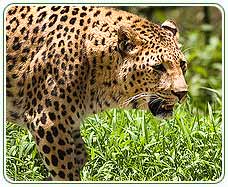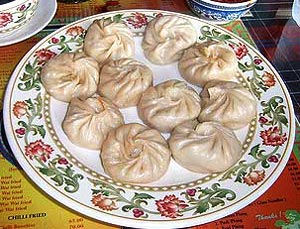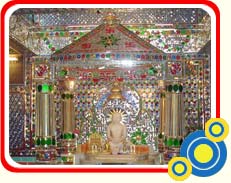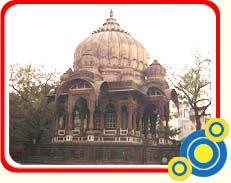Meghalaya is an embodiment of eternal bliss and tranquility wrapped in utter beauty. The “Abode of Clouds” acquires its charm from the picturesque locales, bountiful nature, fresh and sedating surroundings and yes the adventure sports. The exposition of exuberant emerald hills and glens often bathing in frequent drizzles will resuscitate your spirits. Trip to Meghalaya promises a rendezvous with the exclusive flora and fauna, the amicable tribal folks and their cultural heritage. Tour to Meghalaya can be for adventure, for sightseeing, for resurrection or simply to relax and enjoy.
The main fauna of Balphakaram is birds. There are hundreds of species of birds are found. Apart from birds there are other wildlife like langur, cheetal deer, leopard, different reptiles and many other. But the main attraction is to explore the mythical and fiercesome terrain of this high altitude. Acres and acres of vast tableland is covered with ground orchids and other herbs and bush in multi colour blooms present an unforgettable sight. Also mid April to Mid June , it is the best time for bird watching and wildlife study.
Meghalaya was created as an autonomous state within the state of Assam on 2 April, 1970. The full-fledged State of Meghalaya came into existence on 21 January, 1972. It is bound on the north and east by Assam, and on the south and west by Bangladesh. Meghalaya, literally meaning the abode of clouds, is essentially a hilly state. It is predominantly inhabited by the Khasis, the Jaintias, and the Garo tribal communities. The Khasi Hills and Jaintia Hills, which form the central and eastern part of Meghalaya, is an imposing plateau with rolling grasslands, hills and river valleys. The southern face of the plateau is marked by deep gorges and abrupt slopes, at the foot of which, a narrow strip of plain land runs along the international border with Bangladesh.
There are two National Parks and two wildlife sanctuaries in Meghalaya. Nobrek and Balpakam are the two National Parks and Nongkyllem and Siju are the two wildlife sanctuaries in Meghalaya.
Balpakram National Park
The 'Land of Perpetual Winds’ to the outside world but the tableland is in the south eastern corner of the Garo Hills. It has an importance for both Garo and Hindu religious beliefs. Balphakaram, which is declared as a national park in 1987, is the land of scenic beauty, lying at an altitudeof narly 3000ft above sea level, covering an area of 200 sq.km.
It is vast tableland of dense forest, teeming wildlife and quite an unknown rich bio diversity spot in India. it is a home many rare and exotic species of fauna, some endemic to the area, many almost extinct, evokes interest among wildlife enthusiasts. The Garos consider Balphakram to be sacred as the land where the spirits of the dead sojourn. The steep rock cliffs of the canyon are believed to be the natural habitats of the gonchos or evil spirits. Interesingly, on the Khasi hills border, there is a natural water tank of the rock, which is perpetually clear and transparent.
The main fauna of Balphakaram is birds. There are hundreds of species of birds are found. Apart from birds there are other wildlife like langur, cheetal deer, leopard, different reptiles and many other. But the main attraction is to explore the mythical and fiercesome terrain of this high altitude. Acres and acres of vast tableland is covered with ground orchids and other herbs and bush in multi colour blooms present an unforgettable sight. Also mid April to Mid June , it is the best time for bird watching and wildlife study.
Nokrek National Park
| Covered in thick forest, at an altitude of 1418 meters above sea level, Nokrek is the highest peak in the Garo Hills and home of the mother plant of Citrus-Indica (orange). An area of 47 sq. kms. around Nokrek has been declared a National Park. The entire Nokrek range has also been demarcated as a biosphere reserve where many rare species of plants and animals are found. Almost all the rivers of Garo Hills originate along these ranges and, the most famous is the Singsang River. The story of the wild jungle men locally called the Mande Burung is told to travelers, though this belief is slowly disappearing, the local villagers are convinced of their presence. | |
| The entire Nokrek Biosphere Reserve covers an area of about 800 sq. kms. and has a number of villages within its boundaries. Arrangements can be made for stay in these villages. Activities such as trekking, bird watching and observing wild elephants in their natural habitat are some of the interesting attractions while visiting this biosphere reserve. An exciting trekking track is from Nokrek to Tura the administrative headquarters of Garo Hills through the Tura Peak. This trekking track goes through some thick virgin tropical forests before reaching the Tura Peak. A breathtaking view of the rolling hills and Bramaputra in the distance greets you here. | |
| There are several picturesque sites and rivers surrounding Tura but a visit to Badadam area is a must. Here, Borangs or the original tree houses are a common sight. These are used by farmers in their jhum field as rest houses and protection against wild animals. The other structure that is typical to this area is the traditional bamboo house. The unique feature of this structure is that although made of bamboo, it is specially designed, and constructed to be ‘tiger proof’. Bamboo poles are fixed and tied in several layers to construct walls in such a manner that will make it impossible for a tiger to attack the dwellers unawares. Another interesting tradition practiced by the people is the erection of carved memorial posts (Kima) made of wood to commemorate the death of a loved one. Close to Tura, at the confluence of two rivers namely Ganol and Rongram is an old stone age site which is worth visiting especially for an anthropologist. It is believed that the orange tree originated in the hills of Meghalaya, and later the Arab merchants traded oranges from the Khasi hills, Garwal, and Sikkim and took them to Southern Europe.
In Meghalaya, multi cuisine restaurants as well as local food stalls are to be found everywhere. Other than the usual Chinese, Indian and continental dishes one can also go for local dishes. For the more adventurers one can sample the local food, one is sure the taste buds are in for a treat for the spicy dishes. Red rice from the valley of Sung is known to be delicious. Pork in every form is enjoyed by all the people of Meghalaya. During the early monsoon, different varieties of mushroom sprout all over the Jaintia and Khasi Hills and these make their way to the local markets. The mushrooms are either cooked in combination with the meat dishes or just fried lightly on its own. Rice is cooked either plain or in combination with onions, ginger and turmeric, giving it the characteristic yellow color this is known as Jastem. Another variation is the Jadoh which is rice cooked with meat (generally Pork). Rice cakes called Putharo and the drier flaky Pumaloi are prepared from rice flour. Another variety is the deep fried jaggery sweetened Pukhlein and steamed Pusla usually eaten as snacks with tea. Multi cuisine restaurants in all the major towns of Meghalaya offer Chinese, Indian and Continental dishes. Staple food is rice and it varies from red rice to the sticky glutinous rice. Even a cold salad of shredded pork with onions and ginger is also very popular Among the three group Garo cuisine is comparative simple to cook with various variations of spices adding richness to the flavor. One of the most popular dishes among the Garos is the Nakham Bitchi dish which is prepared from special; dry fish, chilies and soda. This is hot spicy soup and is usually served with rice. Plus there are other fish or meat dish, usually boiled with Yam, Gourd, Pumpkin, chilies and bamboo ash water. Popular among the dishes are the one cooked wrapped in leaves or in fresh or green bamboo cylinders over an open fire. Once the food is cooked there is a sound of the bamboo cracking. The food thus prepared has the flavor of the leaves and green bamboo. Also popular among the Khasi, Jaintia and Garos is fish and meat preserved either by drying in the sun or smoked over fire. A variety of Chutneys prepared from different types of herbs, fermented Soya bean and fermented fish always accompany the meals. Last but not the least is the Betel nut and leaf, the perfect end to a hearty meal and a must serve for guests in every household. |







 The Kanch Mandir, as the name suggests, is a temple which is entirely made up of glass and mirrors. It is also known as the Seth Hukamchand Temple, as it was built by the "Cotton King" Sir Hukamchand Seth in the early 20th century. It is primarily a Jain temple and is a wonder in glass. The walls, ceiling, floor, pillars, doors, everything here is entirely adorned with glass. The Kanch Mahal has always been an object of interest for almost all the Hindu rulers in India.
The Kanch Mandir, as the name suggests, is a temple which is entirely made up of glass and mirrors. It is also known as the Seth Hukamchand Temple, as it was built by the "Cotton King" Sir Hukamchand Seth in the early 20th century. It is primarily a Jain temple and is a wonder in glass. The walls, ceiling, floor, pillars, doors, everything here is entirely adorned with glass. The Kanch Mahal has always been an object of interest for almost all the Hindu rulers in India.